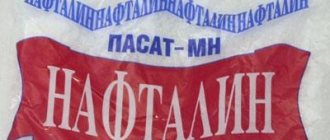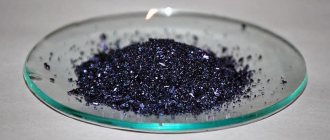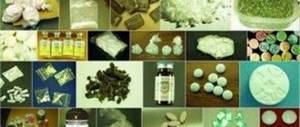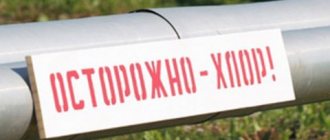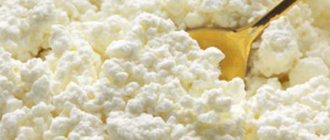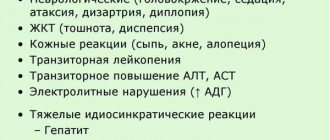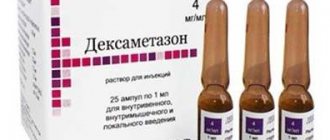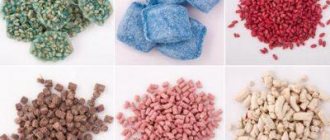Sodium nitrite is a colorless rhombic prism. Potassium nitrite - yellowish crystals. They are used in the synthesis of a number of organic substances, in the food (in the technological processing of meat and fish products) and textile industries. Poisoning is possible during loading and unloading, and at home - if sodium nitrite is mistakenly ingested instead of table salt. Nitrites enter the body through the respiratory system and gastrointestinal tract (accidental household intoxication). When large doses of nitrites are ingested, the latter are excreted in the urine.
Nitrites are poisons of the central nervous system. The vasodilating effect is due to paresis of the vasomotor center, as well as a direct effect on blood vessels (“nitrite effect”). Strong methemoglobin formers. Mixed circulatory-blood hypoxia develops.
History of creation
Mustard gas is the scientific name for 2,2′-dichloroethyl thioether.
It is impossible to say exactly who was the first to synthesize the gas. Around the same time (1860), several scientists were able to isolate this ether in laboratories. In Germany, the discovery was made by Albert Niemann, in England by Frederick Guthrie, and in France by Cesar Depres. The German Victor Mayer (1886) managed to develop a method for producing pure mustard gas. These scientists also carried out the first laboratory tests, which resulted in work describing the toxic effects of mustard gas on humans. A colleague who also took part in the research together with V. Mayer was the Russian scientist Nikolai Dmitrievich Zelinsky. Unfortunately, during the work N.D. Zelinsky received a burn and poisoning with this gas, which did not allow him to continue the tests. Based on the work of W. Mayer, in 1916 two chemists, W. Lommel and W. Steinkopf, developed and introduced the industrial production of a poisonous gas, which they called Lost (the first two letters of the scientists' last names). The name of the gas was not fixed.
Physical properties
Basic physical properties of 2,2′-dichloroethyl thioether:
- Liquid that has no color.
- The smell is pungent, similar to garlic, mustard.
- Boiling point - 217°C.
- Melting point – 14.5°C.
- The substance is destroyed at temperatures above 150°C; complete decomposition at 500°C.
- The density of the substance is higher than the density of water.
- At high air temperatures, the stability of the poisonous gas decreases, but the number of ether molecules in the air increases due to good evaporation.
Chemical properties
Sulfur, two chlorine atoms and ethylene are responsible for the chemical properties of mustard gas:
- Poorly soluble in water. Mixing occurs only with thorough stirring. For example, if it gets into any body of water, mustard gas will not dissolve in the water, but will remain with an unchanged chemical composition, being at depth. In some cases, it may form a thin film on the surface of the water.
- Soluble in vegetable and animal fats and organic solvents.
- Inert to many types of metals; Aluminum capsules can serve as containers for storing liquids.
Pathogenesis of acute poisoning
Under the influence of enzymes, in the presence of catalysts, biochemical reactions occur that convert nitrates into nitrites and nitroso compounds. Nitrites bind hemoglobin to form methemoglobin, which is unable to transport oxygen compounds. Methemoglobinemia develops with signs of acute oxygen deficiency. Gradually, with the help of a special enzyme, a reverse reaction occurs, restoring methemoglobin to normal hemoglobin, and the victim’s health returns to normal.
Mustard gas: effects on humans
Mustard gas is a toxic substance with blister action. What is the mechanism of action of poison on the human body?
- Due to the good solubility of mustard gas in fats of plant and animal origin, it freely penetrates into the human body through the skin. In hot weather, sweat secretions contribute to increased absorption of toxic gas.
- Mustard gas breaks down quickly in the human body. In this case, other toxic compounds are formed that cause great harm to humans.
- Lymphocytes and leukocytes are primarily affected by mustard gas. As a result, the immune system becomes vulnerable.
- The next most negative effects are the organs of the hematopoietic system and the intestinal mucosa.
- Mustard gas is capable of changing the structure of DNA.
The toxic effect of mustard gas on the body is as follows:
- Upon initial contact with small doses of mustard gas, a person may not immediately notice the effects of the gas on the surface of the skin or respiratory tract. The latent period is 6-8 hours. Only an increase in the concentration of gas in the environment will lead to sneezing or a sore throat.
- The toxic substance accumulates in the body, thereby aggravating the patient’s condition.
- With any impact on the surface of the tissue and mucosa, cell death begins, which leads to the death of the damaged area.
- Tissue restoration after damage occurs very slowly.
- Blisters appear in areas of the body damaged by the toxic substance. As a result of reduced immunity, re-infection with other infections may occur, which will complicate the patient’s recovery or lead to death.
- Mutations occur.
- The body's sensitivity to pathogens increases.
Mustard gas: consequences, forms of poisonous gas damage
The main effect of mustard gas is on the eyes, respiratory tract, and skin. If the toxic substance is sprayed in the form of a gas, then the effect of mustard gas on a person occurs most often through the organs of vision, then the respiratory organs, and slightly less often the skin. The droplet form of mustard gas primarily affects the skin. The consequences of a gas attack are treated better than from liquid forms of the toxic substance.
Mild forms of organ damage occur in the event of a short-term stay of a person in the zone of distribution of a toxic substance with a low concentration in the form of gas (0.002 mg/l) and liquid form (0.01 mg/cm2). Medium - with an increased number of molecules of a toxic substance in the environment: gas - 0015 mg/l, liquid droplet - 0.1 mg/cm2. Severe poisoning with mustard gas, which can lead to death, occurs when the concentration of the substance in the vapor state is 0.07 mg/l. Photos of the effects of mustard gas on humans can be seen in the article.
Three forms of respiratory damage:
- Mild form of damage: inflammation of the mucous membrane of the pharynx and nose. Manifests itself in copious nasal discharge, difficulty swallowing, and sore throat. After 10-12 days the symptoms disappear.
- Moderate form: cough with purulent discharge, high body temperature, pain in the chest area. If not treated sufficiently, it leads to the development of pneumonia. Timely prescribed therapy promotes recovery in a month and a half.
- Severe form: symptoms of poisoning occur several hours after exposure to mustard gas. Manifestations of intoxication are a cough with purulent discharge, high fever, and on the third day pneumonia develops, which can lead to pulmonary necrosis and death. The recovery of a patient after severe poisoning is difficult.
Three forms of visual damage:
- The eyes are most sensitive to the effects of mustard gas (gas). Even at low concentrations (0.005 mg/l), after half an hour - three hours you feel pain, burning, a feeling of sand in the eyes, the mucous membranes of the eyes swell, and tears run heavily. After a couple of weeks, the condition returns to normal.
- With moderate eye damage, the symptoms described above intensify, the cornea of the eye becomes additionally inflamed, and purulent discharge appears. Such lesions are treatable, recovery occurs after three months.
- Severe forms of damage occur if droplet mustard gas gets into the eyes. The cornea of the eye suffers greatly, first there is inflammation, then clouding, then the death of the corneal tissue, most often leading to blindness.
Three forms of skin lesions:
- Mild form of damage: inflammation occurs at the site of contact between the skin and the toxic substance, pigment spots and peeling appear. After a week and a half, the symptoms disappear, only the pigmentation can last quite a long time.
- With moderate severity of exposure, small blisters appear on the skin, which then join together and burst, revealing the subcutaneous layers. In this case, infection with other infections may occur, which will aggravate the course of the disease. This form is also characterized by severe itching and pain. Symptoms go away within a month.
- The most severe form is the third. It is characterized by deep tissue lesions that develop into difficult-to-heal necrotic ulcers. Recovery occurs after 4 months.
Mustard gas can also enter the gastrointestinal tract with poisoned food or water. Toxic changes are recorded in the oral cavity, esophagus and stomach. In the intestines, as a rule, no inflammation occurs due to the fact that the toxic substance enters the blood from the stomach. Symptoms: fever, vomiting, diarrhea, heart failure, general exhaustion of the body. Severe forms of poisoning lead to death.
Therapy
- administration of methylene blue as an antidote;
- infusion therapy using colloid and crystalloid solutions aimed at removing nitrates from the body;
- oxygen support;
- symptomatic therapy aimed at maintaining and restoring the functions of affected organs and systems.
A gentle diet is prescribed with the introduction of foods high in ascorbic acid into the diet. Individual prevention comes down to reducing the amount of nitrate compounds in the diet or neutralizing their effect.
Products that intensively accumulate nitrates
- White cabbage, especially the upper leaves, stalk.
- Zucchini and cucumbers, mostly the peel and pulp in the stalk area.
- Potatoes accumulate excess nitrates in their skins.
- Beetroot, the concentration of nitrogen compounds is higher in the top and tip.
- The core and top of the carrot.
- Watermelon has a higher nitrate content in the pulp directly under the rind.
- In greens and lettuce, nitrogen compounds accumulate in the petioles and large veins of the leaves.
Early vegetables and herbs grown in greenhouses are especially dangerous. To ensure the fastest ripening of fruits, crops are intensively fed with nitrogenous fertilizers.
First aid
First of all, in order to avoid the toxic effect of mustard gas on humans, it is necessary to protect the skin, respiratory organs, and eyes with special means - a gas mask and a protective suit.
If drops of mustard gas get on the skin, it can be neutralized by applying a special substance from an individual anti-chemical package; if it is not available, then use an alcohol solution of chloramine. If your eyes are damaged, rinse them with running water or a weak soda solution. The penetration of mustard gas into the gastrointestinal tract is blocked by gastric lavage with a weak solution of potassium permanganate.
Application
The first use of mustard gas by the Germans occurred during the war between the Quadruple Alliance and the Entente. In the literature, this armed conflict is often called chemical warfare, because during this period a terrifying amount of deadly toxic substances was tested and used.
The German military used mustard gas to stop the advance of the enemy army near the city of Ypres. On the night of July 13, 1917, the Germans attacked the Entente troops with mustard gas. The consequences of the first use of the toxic substance were terrible: about 2,500 people were injured, about 100 died on the spot. Many died after the military operation, since the effect of the deadly gas does not manifest itself immediately. After this attack by the Germans, the British, Americans, and French decided to adopt mustard gas too.
Thousands of dead, mutilated lives, bodies, faces of soldiers and civilians, land and water pollution are the consequences of the use of chemical weapons during the war. The civilized world could not allow such horror to happen again in the future. As a result, in 1925 the Geneva Protocol was signed banning the use of chemical weapons and bacteriological weapons in wartime.
Despite the ban, many countries still used chemical agents to corner their opponents and win the war.
Mussolini did not hesitate to use mustard gas in the Italian war against Ethiopia (1935-1936). The main goal was to unite the northern part of Africa under the flag of Italy, so brutal military methods were used, including chemical attacks. As a result, Italy annexed Ethiopia and united it with Eritrea and Italian Somalia into a new colony.
In 1943, a tragedy occurred, as a result of which not only the military, but also civilians of the port of Bari suffered. The German squadron bombed American ships, one of which was carrying shells filled with mustard gas. Despite the fact that the bombs being transported were without fuses, the air strike was enough to activate the toxic contents. There was a chemical attack that killed about 90 people.
What symptoms indicate nitrite toxicity?
Signs of nitrate poisoning can manifest themselves in different ways, depending on how the substances entered the body. So, after eating vegetables or fruits with a large dose of nitrates, the initial symptoms begin to appear after 4 hours. These include:
- stomach pain;
- liver pain;
- yellowing of the whites of the eyes;
- vomiting and nausea;
- the nail bed turns blue;
- diarrhea, maybe with blood (it has a chocolate tint typical for this kind of poisoning).
With more complex diseases, problems in the functioning of the nervous system may begin to appear, in particular:
- your head starts to feel dizzy;
- a restless state develops;
- pain in the back of the head;
- convulsions;
- drowsiness;
- complicated coordination.
If poison is ingested with water, the first symptoms appear within an hour, but without diarrhea. Subacute poisoning can also occur, as a result of which a person quickly gets tired, shortness of breath, and bluish skin.
Chemical weapons ban
On September 3, 1993, the Chemical Weapons Convention was proposed for signature. It came into force only in April 1997, after 65 states signed it. According to this agreement, countries must destroy all stockpiles of chemical weapons on their territory and mothball programs for the development and introduction of new types of toxic substances. To date, the convention has been signed by 190 countries that are members of the UN. About 60% of all chemical weapons stockpiles have been disposed of.
Notes
- Frederick Guthrie.
XIII.—On some derivatives from the olefines (English) // Quarterly Journal of the Chemical Society of London. - 1860. - Vol. 12, no. 1. - P. 109-126. — DOI:10.1039/QJ8601200109. - Fischer, Karin.
Steinkopf, Georg Wilhelm, in: Sächsische Biografie / Schattkowsky, Martina. — Online. — Institut für Sächsische Geschichte und Volkskunde, June 2004. - Franke Z.
Chemistry of toxic substances. M., "Chemistry", 1973, vol. 1, p. 136 - Academy of the State Fire Service of the Ministry of Emergency Situations of Russia Archived copy of October 29, 2020 on the Wayback Machine
- Meyer V., Chem. Ber., Bd. 19, s. 326 (1886).
Modern realities
The Convention was supported by many countries, but toxic substances continue to be used not only during military conflicts, but also during the bombing of peaceful cities. So in the spring of 2020, the media exploded with reports of the use of mustard gas in military Iraq. The initiators of the chemical attack were representatives of the Islamic State (banned in Russia). The use of chemical weapons was also recorded in Syrian cities (2016-2017). Not only military personnel, but also civilians suffer from attacks with toxic substances. Although the Syrian government officially announced that the last batch of chemical weapons was removed in June 2014. Laboratories for the production of mustard gas in military Iraq were discovered by the Americans. UN commissions conduct investigations into every case of the use of toxic substances.
Literature
- Franke Z.
Chemistry of toxic substances: In 2 volumes = Lehrbuch der Militarchemie: Band 1, 2 / Siegfried Franke; Per. with him.. - M.: Chemistry, 1973. - T. 1. - P. 136-166. — 440 s. - Soborovsky L. Z., Epshtein G. Yu.
Chemistry and technology of chemical warfare agents / L. Z. Soborovsky and G. Yu. Epshtein; The chapter “Smoke-forming substances” was written by N. I. Mokeev. - M.; L.: NKOP USSR. State Publishing house of the defense industry, 1938. - 587 p. - Sartori M.
New in the chemistry of chemical warfare agents / Sartori Mario // Advances in chemistry. 1954. T. 21, century. 1. P. 62. - Kutsenko S. A., Butomo N. V., Grebenyuk A. N., Ivnitsky Yu. Yu., Melnichuk V. P.
Military toxicology, radiobiology and medical protection: Textbook for universities / Ed. S. A. Kutsenko. - St. Petersburg: Foliant, 2004. - 528 p. — 10,000 copies. — ISBN 5-93929-082-5. - Petrenko E. P.
Military toxicology, radiobiology and medical protection: Textbook. - Saratov, 2007. - 368 p.
Is mustard gas a cure?
After the tragedy in 1943 in the Italian port of Bari, scientists examined the bodies of the victims. As a result of the examination, it was discovered that there were no leukocytes in the hematopoietic organs and lymph nodes. This discovery prompted scientists to believe that mustard gas could be used in therapy against cancer. Researchers from America, Goodman and Gilman, based on mustard gas, developed a substance that was administered in small doses to a patient with lymphoma. At first, the medicine had a depressing effect on tumor formation. It was shrinking in size. But after some time the cancer progressed. And the substance based on mustard gas accumulated in the body began not to help the body, but rather to poison it. The man died from intoxication.
In small concentrations, mustard gas is used to treat the skin disease psoriasis. Ointments have been created based on mustard gas, where it is contained in a proportion of 1 to 20,000 or 40,000. But over the past 20 years, medicine has extremely rarely resorted to such a radical method of treatment.
During wars, various methods are used, sometimes very cruel, to achieve the goals. But the end does not always justify the means. This is what happened with the use of chemical weapons. The consequences of using toxic substances are shocking (including the effects of mustard gas on humans). Until now, humanity is trying to cope with the consequences of the use of chemical weapons. Today, the main task of the civilized world is not to repeat such mistakes.
Routes of entry into the body
The main sources of nitrate compounds are soil and water. Waste products, dead parts of plants, and animal remains decompose under the influence of microorganisms, forming nitrogen and its derivatives. Some nitrates are produced during thunderstorms. The chemical industry and agriculture make a huge contribution. For intensive growth and productivity, plants are fed with organic matter and nitrogen-containing minerals. Land reclamation measures, household sewage waste, and wastewater disposal from livestock farms ensure the flow of nitrogen into water bodies.
Agricultural crops receive nitrates from fertile soil and accumulate them during growth. In addition, saltpeter is used in the production of sausages, providing an attractive appearance to the product.
Food products and drinking water containing excess nitrate compounds have a detrimental effect on human health. A certain amount of nitrates enters the smoker’s body with tobacco.
Concept and ways of defeat
Mustard gas is a gaseous substance with increased toxicity. It has a negative effect on the environment and has been used in many military operations. There are two types of dangerous compounds. Kinds:
- Sulphurous (technical). It smells like burnt rubber or mustard, is highly soluble in fats and ethanol, worse in water. It has a black or brown tint.
- Nitrous. The substance is colorless and has no odor. Solubility in aqueous solutions is poor, but better in organic compounds. Absorbed by activated carbon.
Mustard gas has an analgesic effect, so it is more difficult to detect poisoning. With repeated poisoning, even with small doses of mustard gas, the person’s condition rapidly deteriorates. A toxic substance enters the body in two ways. Methods:
- Liquid-droplet. This method is characterized by damage to the skin and organs of the gastrointestinal tract. The effect of mustard gas depends on the location of inflammation and dosage. The most commonly diagnosed are erythema and erythematous-bullous dermatitis.
- Airborne. In this case, the skin, visual and respiratory systems are exposed to harmful effects. The consequences are eye diseases, laryngitis, erythematous-diffuse dermatitis. In case of serious intoxication, the development of pneumonia, leukocytosis and corneal necrosis cannot be ruled out.
The severity of the damage depends on the amount of active substance and the time of influence on the body. Even a small amount of mustard gas can damage lung tissue and other internal organs.
Hazardous gas is not used in domestic or industrial environments. Mustard gas is used as a weapon of mass destruction during military operations. There have been no cases of poisoning due to improper storage or transportation.
Chronic condition of poisoning
The body copes well with the effects of small amounts of nitrates. But nitrates pose a particular danger to the growing tissues of the embryo, since theoretically they can have a sharp negative effect on them. Veterinarian research has shown that nitrates cause miscarriages in livestock. At the moment, this effect has been proven only in animals, but people should not exclude such a danger.
Important! Chronic hypoxia in a child can provoke a lag in the development of the mind and body, disruption of the functioning of the heart muscle and deterioration of the immune system.
Symptoms of mustard gas poisoning
General symptoms are characteristic of all physical forms of a toxic compound. Often diagnosed with heavy metal poisoning and radiation sickness. What signs should you pay attention to?
- lack of appetite;
- dizziness;
- general deterioration of condition;
- soreness in the head;
- impaired perception of information, memory problems;
- loss of consciousness;
- the appearance of seizures;
- kidney dysfunction;
- intense flow of tears;
- slow pulse;
- vascular insufficiency.
The victim's condition is rapidly deteriorating. Depending on the method of penetration of mustard gas, the symptoms that develop vary. Below are symptoms characteristic of all ways the toxin enters the body.
The toxic substance enters the body through airborne droplets. There are three degrees of intoxication. Degrees:
- Easy. Appears 2–6 hours after contact with mustard gas. There is dry mouth, soreness, and cough. A runny nose occurs, the mucous membranes swell and become red. Symptoms disappear within a week.
- Average. The onset of symptoms is noted the next day. An intense cough, purulent nasal discharge, and impaired breathing are diagnosed. There is severe soreness in the throat. Necrosis of the mucous membrane of the bronchi and trachea is gradually observed. An increase in temperature is possible. Unpleasant symptoms persist for two months.
- Heavy. The described signs appear more clearly, the cough intensifies, and shortness of breath appears. The development of mustard gas pneumonia and pulmonary edema cannot be ruled out.
If the respiratory system is seriously damaged by mustard gas, lung abscess and emphysema may develop. Treatment takes quite a long time.
Damage to the organs of the visual system can be mild, moderate or severe. Each degree is characterized by the presence of certain signs. Symptoms:
- In case of mild poisoning, intense lacrimation is observed. There is severe pain in the eyeballs, a feeling of sand, and redness. Swelling of the conjunctiva is diagnosed.
- Intoxication with mustard gas to a moderate degree is characterized by separation of the cornea, its cloudiness and roughness. There is a sharp deterioration in visual functions.
- A severe overdose of mustard gas leads to the appearance of ulcerative formations on the cornea, pus may appear in the anterior chamber of the eyeballs, and the iris becomes inflamed. Visual abilities are greatly reduced.
Symptoms of severe eye damage persist for five months. Blindness is possible.
Damage to the skin by mustard gas occurs in different ways. Symptoms depend on the severity of the lesion. How it manifests itself:
- With a mild form of the lesion, the appearance of erythematous areas is noted. The first manifestations are observed after 12 hours. After five days, pigmentation appears on the irritated surface, and the skin peels off. After a week, only the changed pigment remains.
- Symptoms of moderate mustard intoxication are diagnosed 2–4 hours after contact with a toxic substance. Along with erythema, blisters form, which gradually increase in size, turning into erosions. The epithelium is restored within three weeks.
- In severe cases of poisoning, an erythematous-bullous form of dermatitis occurs. After five hours, blisters form on the upper layer of the epidermis, and after three hours, ulcers appear in their place. Scars form at the site of ulcerative lesions.
Depending on the location of the lesion, the process and duration of recovery differ. Complications include cachexia and anemia.
When drinking water contaminated with mustard gas, the functioning of the digestive system organs is disrupted. The first symptoms are diagnosed fifteen minutes after the poison is ingested. What happens:
- a rush of blood to the gums and mucous membranes;
- loose stool mixed with blood;
- convulsive manifestations;
- weakness, lethargy;
- necrotic changes in the stomach.
A day later, acute heart failure may develop, which leads to death. The development of cancer in the future cannot be ruled out.
How does poisoning manifest itself in children?
The manifestation of nitrate intoxication in children is standard for this type of poisoning, but with a greater tendency to deteriorate the functioning of the circulatory system and nervous system:
- shortness of breath appears and mobility decreases,
- lips and nails turn blue,
- Hypoxia causes convulsions and loss of coordination.
Diarrhea, vomiting and nausea are relatively rare or absent. In general, all symptoms are often very similar to toxic pneumonia.
First aid and treatment of mustard gas poisoning
If symptoms of mustard gas poisoning are detected, first aid must be provided. Timely measures taken will help avoid negative consequences. Help:
- First of all, they use special anti-chemical packages - degassers. In their absence, use a 10% aqueous-alcohol solution of chloramine.
- The skin is thoroughly washed with warm water and soap. This procedure is relevant if no more than 10 minutes have passed since the poison came into contact with the skin.
- The areas of the skin affected by mustard gas are lubricated with anti-burn agents, and it is recommended to apply bandages.
- If a toxic substance gets into the eyes, rinse with an aqueous solution of chloramine, then continue cleansing with clean water.
- The oral and nasal cavities are washed with a soda solution.
- If a toxic compound penetrates into the stomach, rinsing is carried out, then the victim is given a mixture of activated carbon and water in a ratio of 4:
- Additionally, it is recommended to use antihistamines.
In the absence of special anti-chemical degassing bags, the use of any chlorine-containing substances is permitted. The development of consequences depends on the speed of providing first aid for mustard gas poisoning.
Treatment of intoxication with mustard gas is carried out in a medical facility. Medicines are prescribed by a doctor depending on the way the poison enters the body and the patient’s condition. There is no specific antidote for poisoning.
Review of antidotes
Antidotes are medications aimed at detoxifying toxic substances that have entered the body and caused clinical poisoning.
After receiving emergency care, you must urgently call an ambulance. Poisonings of various kinds are treated in the intensive care unit.
The main feature of therapy for nitrate intoxication is the immediate use of 1% methylene blue. The antidote is taken taking into account body weight (10 mg is administered for every 1 kg). If the symptoms do not go away, repeat the administration at intervals of 20 minutes.
It is recommended to use the pharmaceutical drug “chromosmon” for pathology. The composition of the medicine includes methylene blue + 25% glucose.
The therapy is supported by a dropper with a solution of sodium thiosulfate and ascorbic acid. Additionally, doctors prescribe oxygen inhalations and diuretics.
Prevention methods and consequences of poisoning
Military people are required to have protective equipment in the form of rubber gloves and boots, and protective raincoats. A gas mask is required. After contact with a toxic compound, these items must be destroyed.
If poison gets on personal belongings, carry out thorough treatment with disinfectants.
Mustard gas is a dangerous gas that can cause death. Even with mild poisoning, exacerbation of chronic diseases and the development of new diseases cannot be ruled out. The nervous and respiratory systems, the gastrointestinal tract suffer, the functioning of the heart, liver, and kidneys is disrupted.
Mustard gas poisoning is rarely diagnosed. However, it poses a serious danger to human health. If suspicious symptoms appear, it is necessary to immediately provide assistance to the victim in order to avoid negative consequences.
Prevention
To prevent industrial nitrite poisoning, it is important to follow safety rules:
- Technological equipment must be sealed.
- It is mandatory to use personal protective equipment (overall clothing, respirator, gloves).
- At the end of your work shift, you must take a shower and hand over your work clothes to the laundry.
- Eating and smoking are prohibited in the workplace.
Video from YouTube on the topic of the article:
Nitrate poisoning is a dangerous condition that often requires resuscitation. The causes of intoxication are various factors: from eating vegetables with chemical content to working with contaminated soil.

